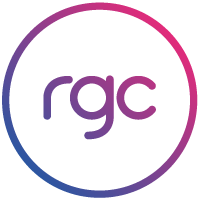 I have been doing a bit of media training for clients lately and it has reminded what an incredibly daunting experience it can be for people who do not deal with the media on a daily basis. For the vast majority of executives – regardless of age, experience or gender – interacting with the media for the first few times can be cause to break out in a rash and immediately commence a search for any number of reasons why it is a bad idea (delegation to someone else to ‘help’ them develop their skills is a favorite!). Why engage with the media? Doing a media interview for the first time comes from the same place the fear of public speaking comes from, amplified to the size of the prospective audience. The fear of something going horribly wrong and the consequences for your career, business and social status can be terrifying. So why the hell would you put yourself through that? Because it is great for your business. Getting your name out through earned media channels allows you to reach a bigger audience with greater credibility than you could image with your paid or owned channels. Earned media drives four times the brand lift of paid media and 51% of millennials are more likely to be influenced by earned media (BazaarVoice, 2012) than advertising. There are plenty of other reasons why you should engage with the media.
I have been doing a bit of media training for clients lately and it has reminded what an incredibly daunting experience it can be for people who do not deal with the media on a daily basis. For the vast majority of executives – regardless of age, experience or gender – interacting with the media for the first few times can be cause to break out in a rash and immediately commence a search for any number of reasons why it is a bad idea (delegation to someone else to ‘help’ them develop their skills is a favorite!). Why engage with the media? Doing a media interview for the first time comes from the same place the fear of public speaking comes from, amplified to the size of the prospective audience. The fear of something going horribly wrong and the consequences for your career, business and social status can be terrifying. So why the hell would you put yourself through that? Because it is great for your business. Getting your name out through earned media channels allows you to reach a bigger audience with greater credibility than you could image with your paid or owned channels. Earned media drives four times the brand lift of paid media and 51% of millennials are more likely to be influenced by earned media (BazaarVoice, 2012) than advertising. There are plenty of other reasons why you should engage with the media.
Are you a goodie or baddie? To be simplistic, most interactions with the media can be characterised as either a threat or an opportunity. How you deal with the media depends heavily on this context and if you are a goodie or a baddie. Threats are where there is a risk your name or brand could be damaged as a result of a media report. The strategies you adopt in these circumstances are vastly different to how you deal with an opportunistic engagement. It will be fairly easy to tell the difference when the time comes. If you just jagged a $2 million bonus while profits and shareholder returns declined, you are the bad guy and should expect some tough questions. Your business just went into administration leaving customers high and dry. Expect some tough questions. Like it or lump it, asking these tough questions is a journalist’s job. In these situations, harm minimisation is the main priority. However, if you haven’t ripped anybody off lately talking to the media is something you should actively be pursuing and can deliver massive return, for minimal risk. The vast majority of interactions with the media are simple exchanges of information. You have knowledge, insight and expertise that the journalist wants to tell their reader, or viewer in an interesting and engaging way. It is a simple transaction. You get your name in the paper, they get a great story to tell their audience. Nailing the interview So your PR has done their job and pitched a story and the journalist wants to have a chat. Once you accept that all they want to write is an interesting story about you and your business, it is easy to let down the defences and focus on maximising the opportunity. The Seven Ps (Prior Preparation Prevents Piss Poor Press Performance) Like anything, being prepared for a media interview will drastically improve the outcome. Your first step is to understand your audience, or more accurately, the audience of the news outlet you are talking to. Visit the publication’s website to get a feel of who they are trying to talk to. Understanding the publication will better prepare you for the kind of questions you may be asked. Take the time to red the journalists recent pieces to get an insight into what they are looking for. 
Practice never hurt anybody. Ask one of your colleagues to ask you a couple of questions to make sure you are in the right frame of mind. Sometimes the most basic questions can be the hardest. What is your strategy? Tell me about the history of your business? What is your pricing structure? Interview basics Once you are actually on the phone or sitting in front of the journalist there are a few things you can do make the experience positive for both you, the journalist and your organisation. The best stories come from interviews where the journalist and the subject build a rapport. Treat an interview as a conversation with an old friend you are catching up with and telling them about your great new business. Get started by asking them about their day, other stories they are working on or what they are doing on the weekend. Don’t be afraid to ask them questions as well. Always be looking for opportunities to integrate your key messages while still staying focused on the question. Nothing will annoy a journalist more than simply parroting a bunch of canned lines that has nothing to do with the question. Remember your messages are just that and an interview is not a challenge of your ability to recite stuff verbatim from a cheat card. If there is one thing you should take away from this blog about interviews it is to try andbe interesting. That is particularly important for people who are not natural salespeople but find themselves as the CEO and media spokesperson. Remember you are competing for space with other organisations. Journalists even compete for page space or airtime within their own organisation. The simpler, more interesting and exciting your answers the more likely you are to secure your share, or more. Don’t use corporatese, legalese or any other style designed to put an audience to sleep. This is boring.
“If the external environment remains stable and we can execute our strategy effectively we expect to be able to achieve future growth in line with past performance.”
The silence you can hear is the journalist asleep on the other end of the phone. This is a quote.
“We’re killing it. We’ve got the best solution in the marketplace and our competitors can’t keep up. We expect to shoot the lights out over the next couple of years.”
By adopting these few simple techniques you can earn your business thousands of dollars, sometimes millions, of free publicity. If you’re interested in undertaking our media training workshops feel free to contact me on 0415 743 838 or ben@rgcommunications.com.au


